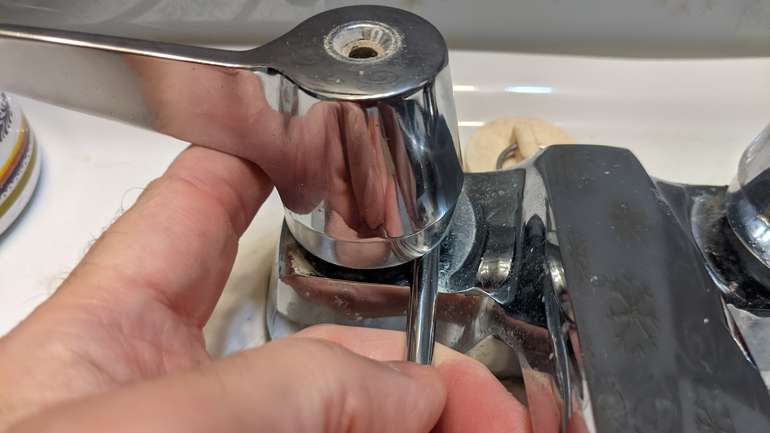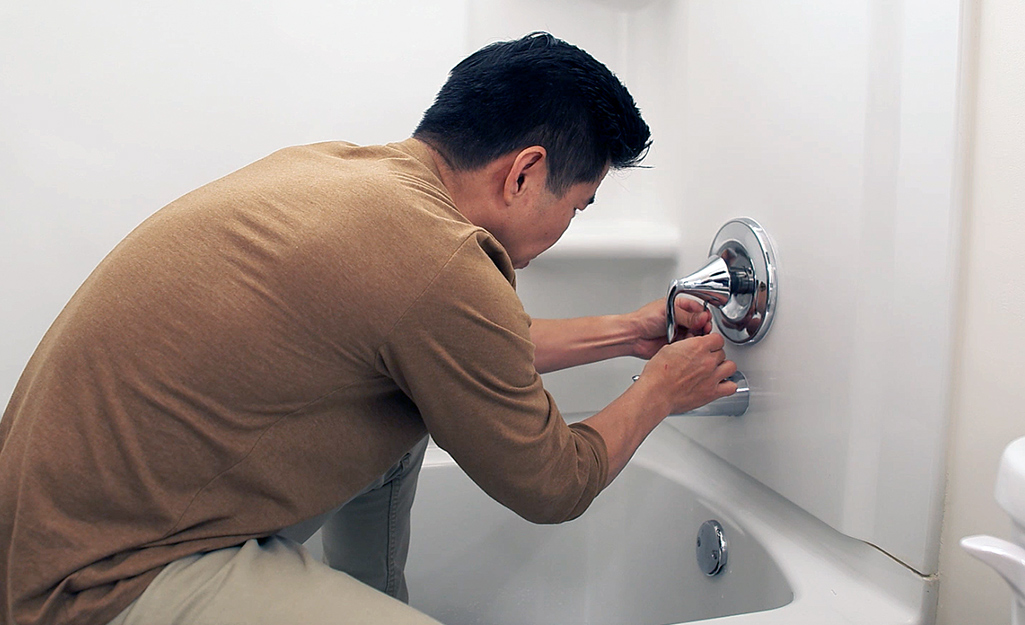Causes Why It's Crucial to Rectify a Faulty Faucet
Causes Why It's Crucial to Rectify a Faulty Faucet
Blog Article
The article in the next paragraphs on the subject of How to Fix a Dripping or Leaky Faucet is absolutely intriguing. Read on and make your own ideas.

Leaking taps could seem like a minor trouble, however their influence surpasses just the inconvenience of the sound. From drainage to incurring unnecessary monetary prices and health and wellness risks, overlooking a dripping faucet can cause different repercussions. In this post, we'll look into why it's critical to address this usual family problem promptly and successfully.
Wastefulness of Water
Ecological Influence
Leaking taps add substantially to water waste. According to the Epa (EPA), a single faucet leaking at one drip per second can throw away greater than 3,000 gallons of water per year. This not only strains water resources but also impacts ecosystems and wild animals depending on them.
Financial Prices
Boosted Water Bills
Past the ecological impact, dripping taps can pump up water bills substantially. The gathered wastefulness in time translates right into greater energy costs, which could have been stayed clear of with timely repair work.
Possible Building Damage
In addition, extended trickling can result in harm to components and surface areas surrounding the tap. Water buildup can create staining, deterioration, and also structural concerns if left unattended, leading to additional repair work costs.
Health Problems
Mold and Mildew Growth
The continuous visibility of wetness from a dripping tap creates an optimal setting for mold and mildew and mildew growth. These fungi not just jeopardize indoor air high quality however also posture health and wellness dangers, especially for people with respiratory system problems or allergic reactions.
Waterborne Diseases
Stationary water in trickling taps can become a breeding place for microorganisms and other virus, increasing the risk of waterborne conditions. Pollutants such as Legionella bacteria grow in stationary water, possibly resulting in serious health problems when consumed or breathed in.
Do it yourself vs. Specialist Fixing
Pros and Cons of Do It Yourself Fixing
While some might attempt to fix a dripping tap themselves, do it yourself repair work feature their very own set of obstacles. Without correct understanding and tools, do it yourself attempts can exacerbate the issue or bring about insufficient repair work, lengthening the issue.
Advantages of Employing a Professional Plumber
Working with a professional plumber ensures that the underlying cause of the leaking faucet is addressed efficiently. Plumbings possess the know-how and devices to diagnose and fix tap problems effectively, conserving time and decreasing the risk of further damages.
Step-by-Step Guide to Dealing With a Dripping Tap
Devices Required
Before attempting to take care of a leaking tap, collect the needed devices, consisting of an adjustable wrench, screwdrivers, replacement parts (such as washing machines or cartridges), and plumber's tape.
Usual Tap Issues and Their Solutions
Determine the type of tap and the certain problem causing the drip. Common troubles include worn-out washing machines, corroded valve seats, or defective O-rings. Refer to maker instructions or on-line tutorials for step-by-step guidance on fixings.
Preventive Measures
Normal Maintenance Tips
To stop dripping taps, carry out routine maintenance such as cleaning aerators, checking for leaks, and replacing damaged parts immediately. In addition, consider setting up water-saving tools or updating to more efficient components.
Value of Prompt Repair Works
Dealing with trickling taps as quickly as they're noticed stops further water wastage and prospective damages, eventually conserving both water and money in the future.
Influence On Home Value
Perception of Well-Maintained Property
Keeping a residential or commercial property in good condition, consisting of attending to upkeep concerns like dripping faucets, improves its viewed worth and worth among potential customers or occupants.
Impact on Resale Worth
Features with well-kept plumbing fixtures, including faucets, command higher resale values in the property market. Attending to dripping faucets can add to a favorable perception during residential or commercial property inspections and negotiations.
Ecological Responsibility
Specific Payment to Preservation
Taking duty for taking care of leaking faucets lines up with more comprehensive efforts towards water preservation and environmental sustainability. Every person's actions jointly make a significant influence on protecting valuable sources.
Sustainable Living Practices
By focusing on punctual repairs and adopting water-saving practices, people add to sustainable living methods that benefit both existing and future generations.
Conclusion
Addressing a leaking faucet surpasses plain ease; it's an important step towards saving water, reducing financial prices, and safeguarding health and residential property. Whether through do it yourself repairs or expert support, taking action to take care of trickling faucets is a little yet impactful means to advertise responsible stewardship of sources and add to a much healthier, a lot more sustainable future.
How to Fix a Leaky Faucet: Step-by-Step Repair Guide
A leaky faucet may seem like a simple annoyance, but if it's not fixed promptly, that leak could cost hundreds to potentially thousands. From water damage to mold, mildew, and high water bills, even a tiny leak can be catastrophic if left unattended. Damage like this can even affect the overall value of your home, so it's important to take the right approach for leaky faucet repair. You may need the help of a plumber in some cases, but we've got a few tips you can try on how to fix a leaky faucet before calling the pros.
Four Faucet Types
When you're learning how to fix a leaky faucet, the first step is knowing what kind of faucet you're working with! There are four common types.
Cartridge Faucets
Cartridge faucets come in one- or two-handled varieties. In one-handled cartridge faucets, hot and cold water combines in a single cartridge. In the two-handled versions, hot and cold water are controlled separately and mixed in the faucet.
Ball Faucets
Ball faucets have a single lever you push up and down to adjust the pressure and rotate to change the temperature. A slotted metal ball controls the amount of water allowed into the spout.
Compression Washer Faucets
They're the oldest type of faucet, but they're still used in many homes — especially older ones. Compression faucets have two separate handles that, when turned, raise or lower the washer that seals a water valve. This valve stops water from flowing through the faucet when it is turned off.
Disc Faucets
Disc faucets rarely need to be repaired due to their maintenance-free design. The water flow is controlled by two discs — the upper one raises and lowers against a fixed lower disc, creating a watertight seal. If your disc faucet starts leaking, you may need to replace the seals or clean residue buildup from the inlets.
Fixing a Leaky Faucet
Step 1: Turn Off the Water
Whether you're learning how to fix a leaky bathtub faucet or how to fix a leaky kitchen faucet, always turn off the water supply to your working area when you're fixing a leak. The last thing you want is a flood added to your list of things to fix.
Look for the shutoff valves below your sink or around the tub and turn them clockwise to stop the water flow. If your faucet doesn't have shutoff valves, you may need to turn off the water for the whole house. Check to make sure it's off by turning the faucet on. If nothing comes out, you're ready to start the repair.
Step 2: Take Apart the Faucet
How you disassemble your faucet depends on the type of fixture you have. You can use a flathead screwdriver to remove the caps on top of the handle or handles for cartridge and compression faucets. Inside, you should see handle screws. Unscrew these with a screwdriver to remove the handle.
Disc- and ball-style faucets will typically have an inlet screw near the handle, and removing that will reveal the interior of the faucet.
Detach the Valve Stem
For cartridge- and compression-style faucets, you'll see the inner valve stem or cartridge once you remove the faucet handles. If you have a compression faucet, unscrew the brass valve stem. If you have a cartridge faucet, pull out the cartridge. If your cartridge has been in place for a while, it may require some tools or extra force to remove it due to mineral deposits.
Examine and Replace Parts
Once you've removed the parts, check them out to confirm what needs to be replaced. You may see corroded rubber washers, O-rings, stems, or cartridges. On a ball-style faucet, check the seats and springs for damage.
If you need to repair a leaky disc faucet, check the inlet and seals on the lower disc.
Once you determine what parts must be replaced, visit your local hardware store. Bring the damaged parts with you to ensure you can purchase the correct components to replace them.
Clean Valves and Faucet Cavity
If you've removed a stem or cartridge, you may notice mineral buildup in the faucet's threads. Use white vinegar to clean the valve seat by soaking it for a few minutes, then scrub it away with a soft toothbrush and rinse with warm water. You can also clean the interior of the faucet in the same way.
Reassemble the Faucet
Once your faucet is cleaned and the required parts have been replaced, it's time to reassemble it. Put the pieces back together and slowly turn the water supply back on. Doing this slowly is crucial because too much initial water pressure can damage the new hardware you've just installed.
https://homewarranty.firstam.com/blog/how-to-fix-leaky-faucet

As an enthusiastic person who reads on , I think sharing that portion was sensible. Are you aware of somebody who is fascinated about the niche? Please feel free to share it. I truly appreciate reading our article about How to Fix a Dripping or Leaky Faucet .
Report this page